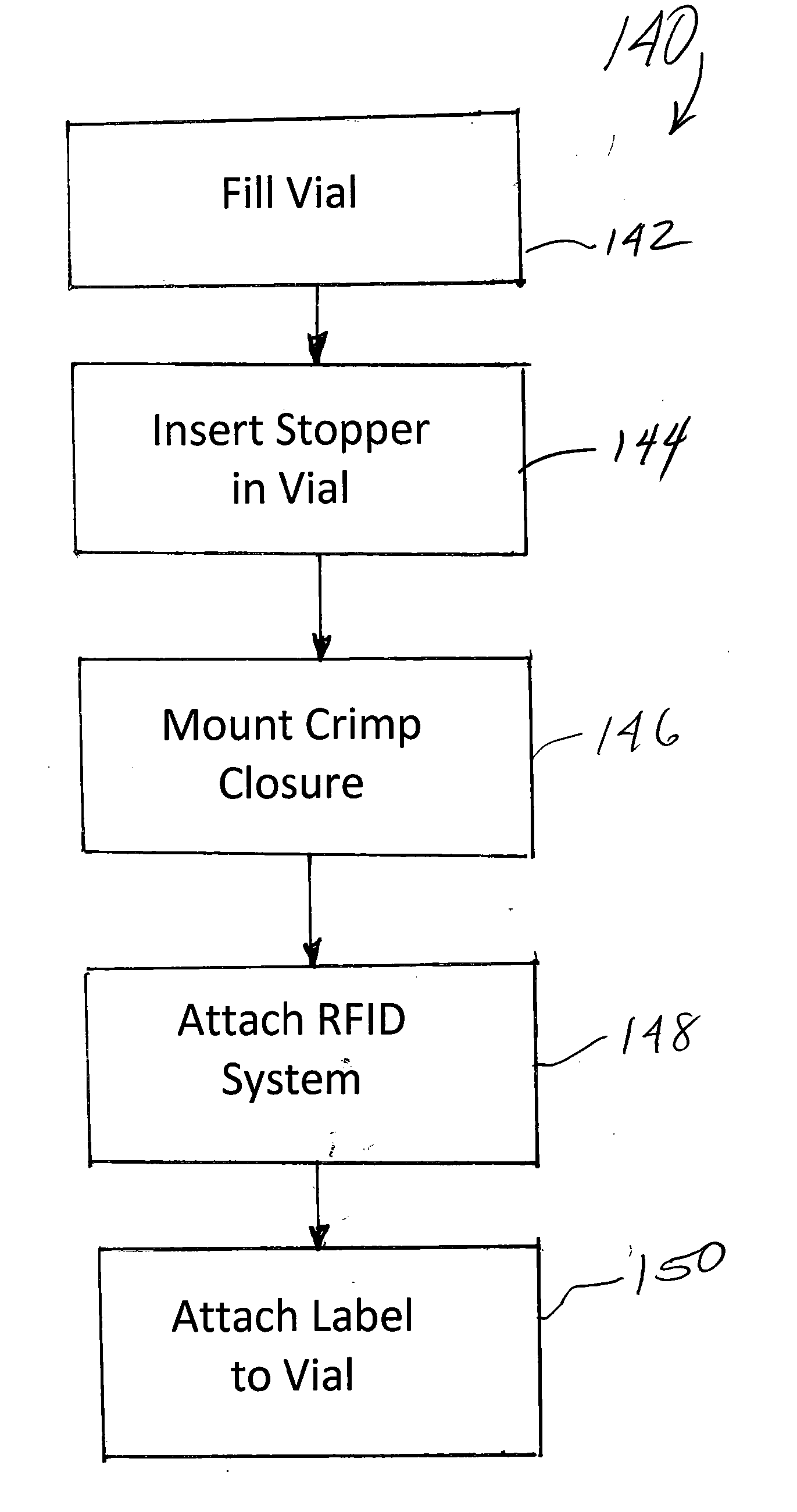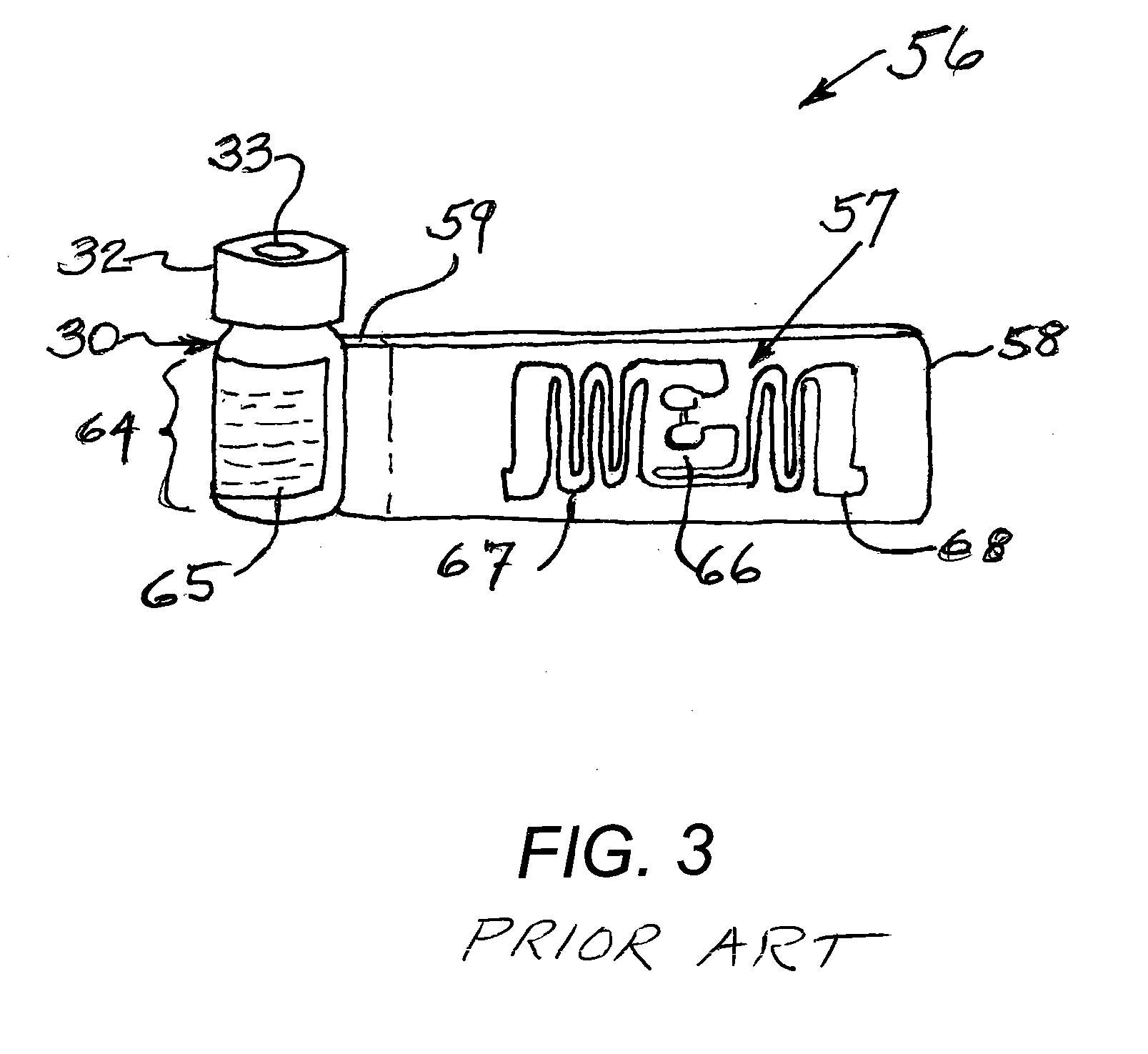RFID tag for medication container closure
- Summary
- Abstract
- Description
- Claims
- Application Information
AI Technical Summary
Benefits of technology
Problems solved by technology
Method used
Image
Examples
Embodiment Construction
[0059]Referring again to FIG. 1, there is shown a small sealed glass container 30 with a metallic crimp closure 32 fastened to the vial portion 34. Although not visible in the drawing, the crimp closure presses a rubber stopper into contact with the top of the vial to seal it shut. The drawing also shows FDA-mandated labeling 36 that almost surrounds the side of the vial 34 but between the two ends 40 and 42 of the label base material 35, there is a space 44 of the vial that is not covered with anything. The container is presently readable only by scanning the bar code 48 at the bottom 52 of the vial with a barcode reader. It would satisfy a need identified above if the container could be fitted with a wireless identification system readable by RF or other non-optical frequency. FIG. 3 shows one way to accomplish this; i.e., the “flag tag” system, but the drawbacks are significant, as discussed above.
[0060]Many ADCs and other medical item storage units are used to store medical vial...
PUM
 Login to View More
Login to View More Abstract
Description
Claims
Application Information
 Login to View More
Login to View More - R&D
- Intellectual Property
- Life Sciences
- Materials
- Tech Scout
- Unparalleled Data Quality
- Higher Quality Content
- 60% Fewer Hallucinations
Browse by: Latest US Patents, China's latest patents, Technical Efficacy Thesaurus, Application Domain, Technology Topic, Popular Technical Reports.
© 2025 PatSnap. All rights reserved.Legal|Privacy policy|Modern Slavery Act Transparency Statement|Sitemap|About US| Contact US: help@patsnap.com



